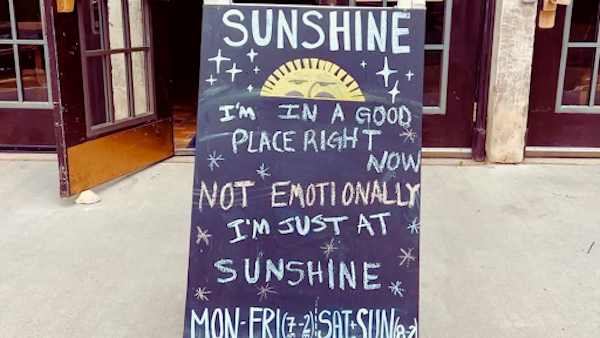Navigating the Climate Action Journey: Lessons from Building a Movement
A passion to create positive impact is often what inspires young and emerging changemakers in sustainability. Yet what are the best ways to create, build, and lead meaningful initiatives that can make a difference?
Kamila Camilo, Executive Director of Instituto Oyá and Founder & Executive Director of Creators Academy Brasil, shares her insights into the climate leadership journey.
When I embarked on my climate action journey, entrepreneurship wasn’t on my radar. Growing up in the outskirts of Sao Paulo till I was 26, I was passionate and desperate for action because the crisis in front of me was literally making people lose their lives. It wasn’t until several years later that I realized I could be part of and actually drive systemic change that could help slow down our climate crisis: build initiatives and co-create something meaningful. My path was neither straightforward nor easy, but it has been deeply fulfilling.
In 2017 I had the privilege for the first time to travel to the Brazilian Amazon rainforest region in Pará State as a volunteer of the Barco Hacker Project, an initiative aiming to share emergent technologies with riverside communities. The experience was deep and transformative for me. I can tell you, from that moment, everything changed — I felt whole, a completeness that I had never before experienced. In the Guamá River, I was reborn. After arriving and visiting a few communities in the region, I went to the river — even without knowing how to swim — and played in the water with some local girls. When I got out of the water, I felt like I was home. I felt that I had found my place, and so my mission. That moment affirmed my purpose, igniting my desire to connect people with the natural world. It also pushed me to create platforms like the Creators Academy, which now includes over 120 content creators who’ve produced more than 600 videos highlighting climate issues in the Amazon region and, most importantly, showcasing solutions and the people who give their lives daily for the protection of their territories. An example is Roberto, a man who previously worked cutting trees illegally in the Amazon rainforest and today is a community leader in the ecotourism industry. Roberto's work has improved economic and ecosystem health throughout the Rio Negro Sustainable Development Reserve and has been recounted across national media. In 2023, he was invited to share his story with industry leaders at the United Nations Global Compact Meeting in New York.
I'd like to share a few lessons that I've learned through my journey. Below are three key elements that have made all the difference for me.
Intergenerational collaboration and diversity
One of the most valuable lessons I’ve learned is the importance of surrounding yourself with a strong and diverse team. My team is multi-generational, blending youthful energy with seasoned expertise. It is also a female-led organization. This mix allows us to balance creativity, open communication, and collaboration with a results-driven approach. Make sure that your team represents the elements of your vision. To be able to do this I've worked with mentors, which has been a game-changer for me. Mentors are people who have walked in your shoes and can anticipate your challenges. And by paying attention, you can learn from their mistakes. Mentors can also be a great source of inspiration. Early in my career, a teacher-turned-mentor believed in my potential, encouraging me to pursue my vision. That belief was transformative. Having someone in your corner who has walked a similar path can provide invaluable guidance, especially when the road gets tough.
The power of community
In 2019 I became a member of the
Global Shapers Community, a group created by the World Economic Forum (WEF) that brings together young innovators, social entrepreneurs, and changemakers from around the world. I didn't speak English at the time, I had never traveled abroad, and all I knew about the WEF was that they have a fancy meeting every year. It would have been impossible for me to believe that three years after that day, I would be in that same fancy meeting and collaborating with global leaders.
I am a member of a diversity of communities, both local and across the world. To be honest, being a part of many highly diverse communities has been equally a blessing and a curse for me. While it has given me so much —meaning, guidance, horizon, opportunities — it is also a mirror where I can see my flaws and where I sometimes compare my journey with others without considering the backgrounds that brought us to this moment. From church groups to dance classes, I’ve intentionally sought out diverse environments to learn and grow. Each group offers unique perspectives, and being a bridge between these worlds has enriched my outlook. It has also inspired the programs that I and my team are developing and growing. For example, our work in the Creators Academy is rooted in inclusivity, engaging creators from different socioeconomic backgrounds. This diversity amplifies our collective impact, demonstrating that collaboration transcends boundaries.
Friendship and joy in the movement
Another insight I’ve gained is the immense value of friendship and joy. Relationships are the bedrock of resilience. A dear friend once told me, “True friends are the ones you can call when something amazing happens.” Celebrating successes together is just as important as supporting each other through challenges. Connecting with the good in all of us and supporting the success of each other has been a guiding principle for me. At the World Economic Forum, a seasoned participant once offered me advice that sticks with me to this day: “See people for who they are, not their badges.” Genuine connections are invaluable, and fostering them often leads to unexpected opportunities.
As I prepare to attend Davos for the second time, now as a Youth Ambassador for the Arctic Basecamp, I’m reminded of the interconnectedness of our ecosystems and communities. The Arctic and the Amazon might seem worlds apart, but their futures are deeply intertwined. Through collaboration, mentorship, and authentic relationships, I’ve learned that small steps can lead to big changes. For young people looking to make a difference, my advice is simple: build strong networks, seek mentors, and never underestimate the power of diverse perspectives.
Till we meet again, with love and gratitude.
About the Author:
Kamila Camilo
Executive Director, Instituto Oyá
Founder & Executive Director, Creators Academy Brasil
PHOTO: Helena Albaa | CreatorsAcademy | Tumbira, Amazonas, Brazil
Read perspectives from the ISSP blog



